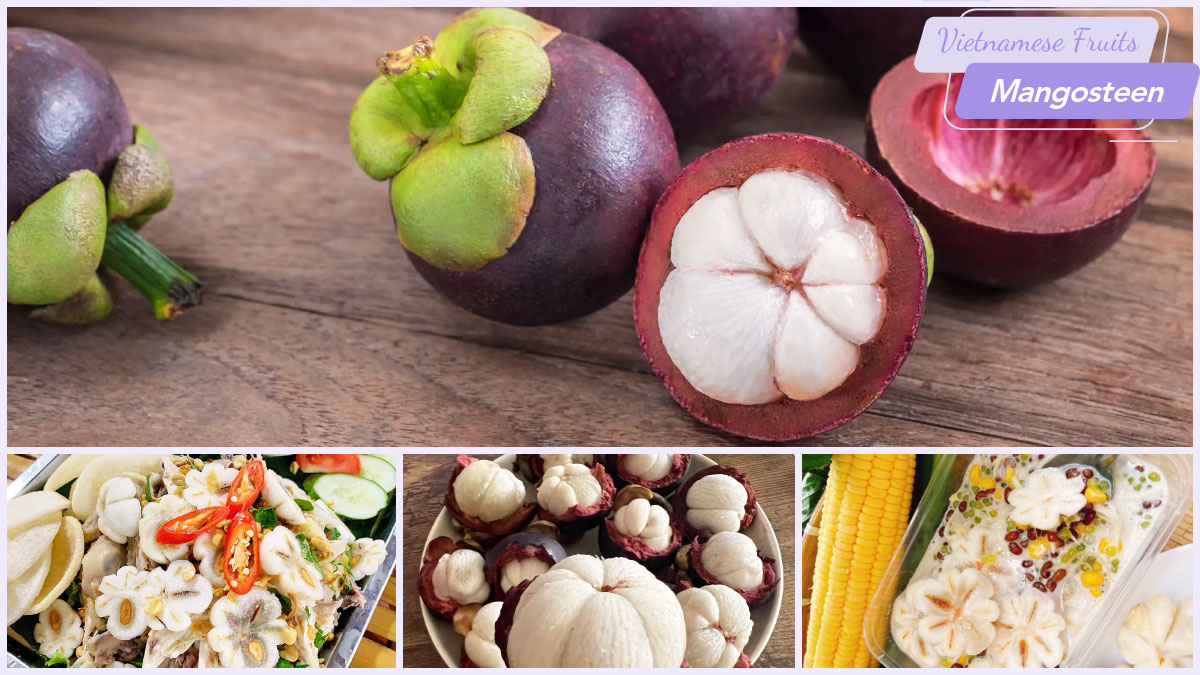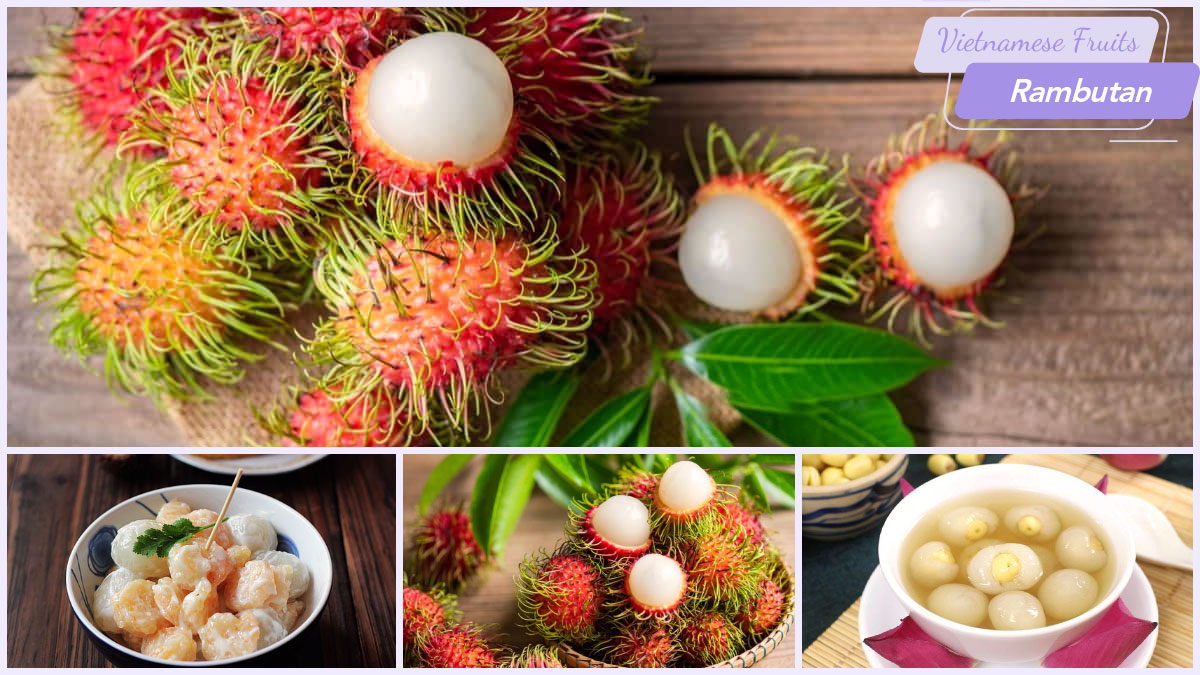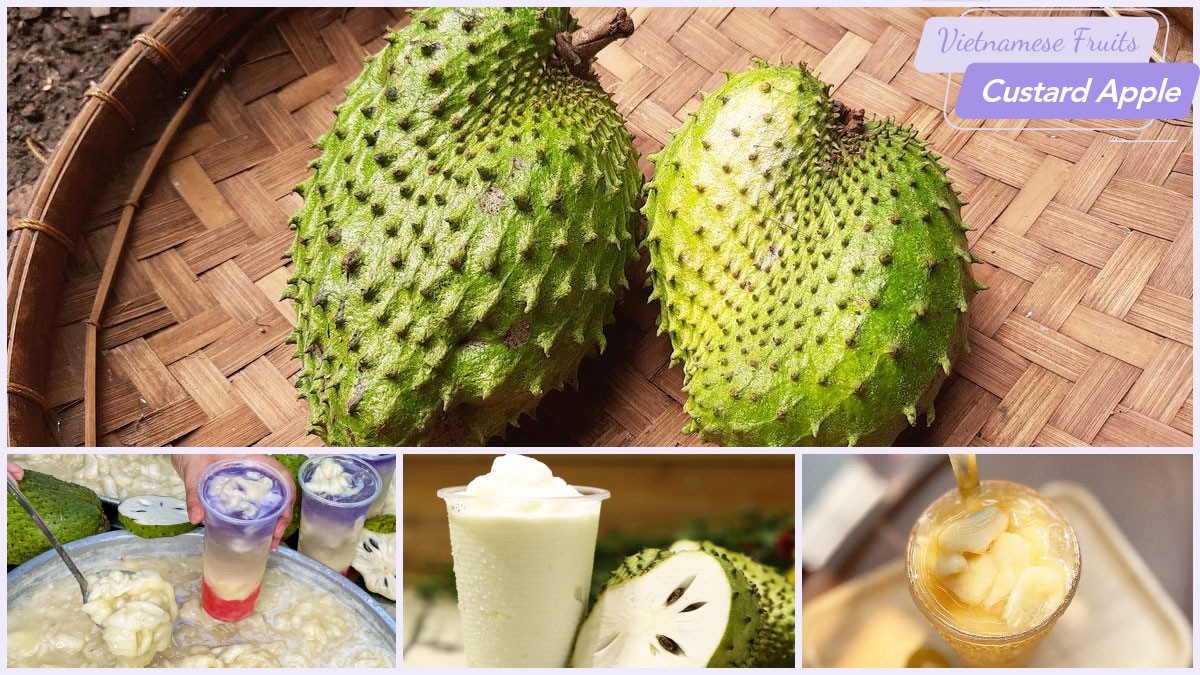What makes Vietnamese fruits so special and irresistible? As you venture through the bustling markets and serene countryside, you will encounter a variety of fruits that are as unique as the country’s landscape. In this guide, Asia Legend Travel reveals the top 10 Vietnamese must-try fruits that will captivate your senses and add a burst of flavor to your adventure. Whether it’s the tangy taste of starfruit or the juicy goodness of rambutan, these tropical delights will enhance your travel experience. Ready to feast on Vietnam’s finest? Join us now!
Must-Try Vietnamese Fruits: Dragon Fruit (Thanh Long)
Dragon fruit, known locally as Thanh Long, is arguably one of the most visually striking Vietnamese fruits you will ever encounter. Its vibrant pink or yellow skin, dotted with green scales, makes it an eye-catcher. The flesh may be either red or white and is dotted with small black seeds.

Nutritionally, dragon fruit is a powerhouse. It is rich in antioxidants, vitamin C, and fiber, making it excellent for boosting your immune system and aiding digestion. The fruit also contains magnesium and iron, essential for energy production and oxygen transport in the body.
Eating this kind of fruit is simple. Slice it in half and scoop the flesh with a spoon, or peel off the skin and cut it into bite-sized pieces. Its mildly sweet flavor and a hint of tartness make it a refreshing snack, perfect for hot days.
Mangosteen (Măng Cụt)
Speaking of Vietnamese fruits, mangosteen, or Măng Cụt in Vietnamese, is often called the queen of fruits. This small round fruit has a thick purple rind and a segmented, juicy white interior. The taste is a delightful combination of sweet and tangy flavors, often compared to a mix of peach and pineapple.

This tropical fruit is not just tasty but also highly nutritious. It is rich in xanthones, an antioxidant type with anti-inflammatory properties. Additionally, mangosteen provides a good amount of vitamin C, fiber, and folate, contributing to overall health and well-being.
If you try this fruit for the first time, you may wonder how to enjoy it, right? To eat mangosteen, press the rind until it cracks open, then remove the segments inside. Be careful with the seeds, which are not edible. The juicy, fragrant segments can be eaten as they are or added to salads and desserts for a tropical twist.
Rambutan (Chôm Chôm)
Next on the list of must-try Vietnamese fruits is Rambutan, or Chôm Chôm in Vietnamese, an exotic fruit that resembles a hairy lychee. Its red or yellow spiky skin encloses a translucent, juicy flesh with a sweet and slightly acidic flavor. The name “rambutan” actually means “hairy” in Malay, aptly describing its appearance.

This Vietnamese fruit is more than just a novelty. Rambutan is rich in vitamin C, manganese, and copper, essential for maintaining healthy skin, bones, and the immune system. It also provides dietary fiber, aiding in digestion and weight management.
How should you eat rambutan? To savor it, just remove the skin to expose the flesh. Be mindful of the seed inside, as it is not edible. Like mangosteen, you can eat the rambutan flesh or add it to fruit salads and desserts. Its unique texture and flavor make it a delightful treat for any occasion.
Lychee (Vải Thiều)
Lychee, also known locally as Vải Thiều, is a small fruit with a rough, pinkish-red skin. Once peeled, it reveals a translucent white flesh-like rambutan that is incredibly juicy and sweet. This fruit is often described as having a floral, rose-like flavor, making it a favorite in many Asian fruits.

Like other Vietnamese fruits, lychee is a nutritional gem. It is packed with vitamin C, providing more than 100% of the daily recommended intake in a single serving. It also contains potassium, copper, and antioxidants, which are beneficial for heart health and immunity.
Eating lychee is straightforward. Peel off the skin and remove the seed to enjoy the juicy flesh. Lychee is best eaten fresh but can also be used in various culinary applications. Add it to fruit salads, desserts, or cocktails for a refreshing twist. This fruit can also be canned or dried, preserving its flavor for year-round enjoyment.
Longan (Nhãn)
Next up in this Vietnamese fruits list, we have longan, known as “nhãn” in Vietnamese, which is a small round fruit with brown leathery skin. Once peeled, you will find a translucent juicy flesh surrounding a single black seed resembling an eyeball. This unique has earned it the nickname “dragon’s eye.”

Longan is not just delightful to the palate; it is also packed with nutrients. Rich in vitamin C, potassium, and antioxidants, this fruit helps boost your immune system, improve skin health, and reduce stress. It is also rich in dietary fiber, which helps with digestion.
To savor longan, just remove the skin and enjoy the succulent flesh. It can be eaten fresh, dried, or even added to desserts and beverages for a sweet, refreshing flavor. Interestingly, longan is often used in traditional Vietnamese soups and teas.
Star Apple (Vú Sữa)
Star apple, or “Vú sữa,” is a fascinating fruit with a star-shaped pattern when sliced open. This fruit comes in two varieties: green and purple. The fruit has smooth, shiny skin and a creamy, sweet flesh that is both aromatic and refreshing. Don’t let its looks fool you. Star apple is more than just a pretty face. It’s loaded with antioxidants, calcium, and iron. The fruit’s high fiber content also aids in digestion and helps regulate blood sugar levels.

Eating this kind of Vietnamese fruits is an art form. Gently massage the fruit to soften it, then cut it in half. Use a spoon to scoop out the creamy, sweet flesh, being careful to avoid the seeds. The taste? Imagine a mix of sweet cream and caramel. So yummy! You can find these beauties in local markets or fruit shops. Remember, choose the perfectly ripe fruits for the best flavor explosion!
Durian (Sầu Riêng)
When it comes to must-try Vietnamese fruits, Durian, commonly known as the “king of fruits,” is a distinctive fruit recognized for its strong smell and unique flavor. This large, spiky fruit has a pale yellow, custard-like flesh that is rich and creamy. Despite its pungent smell, which can be off-putting to some, durian is a delicacy many people adore.

This fruit is high in healthy fats, fiber, vitamins, and minerals like potassium, iron, and magnesium. It’s particularly rich in thiamine, manganese, and vitamin B6. Certain research indicates that it could possess anti-cancer properties.
Have you ever tried durian before? If not, we must say that eating this fruit is an adventure. The fruit is typically cut open, and the fleshy pods are removed from their compartments. You can eat it straight up or try it in various desserts like ice cream or pastries. Just a word of caution – start with a small amount. The rich custardy texture and strong flavor can be overwhelming for first-timers.
Pomelo (Bưởi)
Pomelo, or “Bưởi” in Vietnamese, is the largest citrus fruit, often resembling a giant grapefruit but with a sweeter and milder flavor. The thick, green, or yellow rind encases juicy, pale pink or white flesh segments. Its refreshing taste makes it one of the must-try Vietnamese fruits for those seeking a less tangy citrus option.

When it comes to nutrition, pomelo doesn’t disappoint. It’s a vitamin C superhero, boasting impressive amounts of this immune-boosting nutrient. It is abundant in antioxidants, fiber, and potassium, which makes it a beneficial option for heart health. Plus, its high water content and low-calorie count make it a perfect snack for those watching their waistlines.
Eating pomelo is a bit of an art form, but don’t worry; it’s easy to master. Start by peeling off the thick outer skin and removing the bitter white pith. Then, separate the segments and peel off the membrane around each one. The juicy flesh inside is sweet with a hint of bitterness. In Vietnam, you will often see pomelo featured in salads, where its refreshing taste pairs beautifully with herbs and seafood.
Custard Apple (Mãng Cầu/Na)
Custard apple is a heart-shaped fruit with a scaly green skin. Crack this peculiar fruit, and you will find creamy white flesh studded with black seeds. What does it taste like? It’s sweet and custardy and has a subtle floral note that will make you close your eyes in bliss with every bite.

Nutritionally, custard apple is no slouch over the other Vietnamese fruits above. It is a good source of vitamin C, B vitamins, and potassium. Plus, it has impressive healthy benefits, like boosting immunity and improving digestion.
Even local Vietnamese must say that eating a custard apple is a hands-on experience. Slice it in half, remove the flesh with a spoon, and throw away the seeds. Or, if you are feeling adventurous, break it open with your hands and eat it segment by segment. Just be prepared for sticky fingers – it’s all part of the fun!
Sapodilla (Hồng Xiêm)
Last but not least, let’s try sapodilla or hồng xiêm in Vietnamese when you have a trip to Vietnam. It’s a lesser-known than Vietnamese fruits names above, but an equally delightful fruit. Sapodilla has brown, rough skin and soft, grainy, exceptionally sweet flesh. It is oval-shaped and, when ripe, emits an inviting honey-like aroma.

This tropical fruit is a nutritional gem. Sapodilla is rich in dietary fiber, which promotes healthy digestion. It is rich in vitamins A and C, which are crucial for maintaining skin health and supporting immune function. Furthermore, the fruit contains significant amounts of potassium and iron.
To savor sapodilla, select a ripe fruit and slice it in half. The soft brown flesh can be scooped out with a spoon. Its sweet, malty flavor is best enjoyed fresh, but sapodilla can also be used in smoothies, jams, and desserts. Be sure to remove the large black seeds before eating.
We’ve taken you on a juicy journey through the top 10 tasty Vietnamese fruits. Hopefully, this list has tantalized your taste buds and sparked a desire to explore these exotic flavors. Each offers a unique experience, bursting with vibrant tastes and textures. So, if you’re planning a Vietnam 14 day tour, don’t just stick to Pho and Banh Mi. Give these fruity delights a try!












